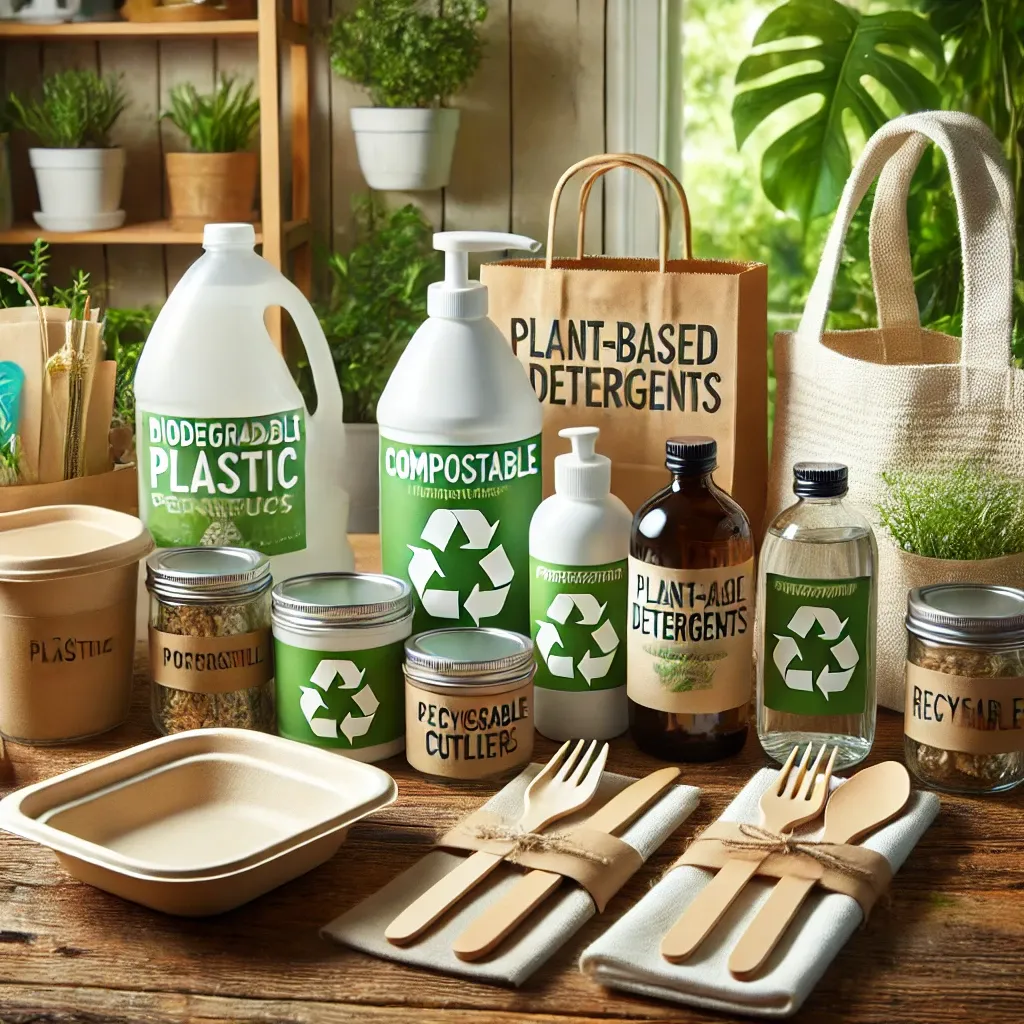In a world increasingly aware of environmental challenges, green chemistry and green manufacturing have emerged as powerful tools for creating a more sustainable future. Whether you're a curious beginner or someone looking to make more eco-conscious choices, this guide will explain the basics, benefits, and real-world applications of green chemistry and manufacturing in a friendly, easy-to-understand manner.
What is Green Chemistry?
Green chemistry, also known as sustainable chemistry, is the design of chemical products and processes that reduce or eliminate the use and generation of hazardous substances. It’s about creating safer, more efficient ways to produce the materials we rely on every day—without harming the environment or human health.
The 12Principles of Green Chemistry
Green
chemistry is guided by 12 key principles, established by Paul Anastas and John
Warner. These principles include:
1. Prevention: It’s better to prevent waste than to clean it up.
2. Atom
Economy: Design processes that maximize the incorporation of all materials
used.
3. Less
Hazardous Chemical Syntheses: Use and produce substances that are non-toxic
or less toxic.
4. Designing Safer Chemicals: Create products that are effective but minimize
toxicity.
5. Safer
Solvents and Auxiliaries: Avoid using harmful solvents or separation
agents.
6. Energy
Efficiency: Use processes that require less energy.
7. Renewable Feedstocks: Use raw materials that are renewable rather than
depleting.
8. Reduce
Derivatives: Minimize unnecessary steps that generate waste.
9. Catalysis: Use catalytic reagents instead of stoichiometric ones.
10. Design for Degradation: Create products that break down into harmless
substances after use.
11. Real-Time Analysis for Pollution Prevention: Monitor processes to prevent
hazardous byproducts.
12. Inherently Safer Chemistry for Accident Prevention: Choose chemicals and processes that minimize the risk of accidents.
These principles aren’t just theoretical—they’re being applied in industries worldwide to create cleaner, safer, and more sustainable products.
What is Green Manufacturing?
Green manufacturing is the process of producing goods using environmentally friendly methods. It focuses on reducing waste, conserving energy, and minimizing the environmental impact of production. Think of it as the practical application of green chemistry in the industrial world.
Key Practices in Green Manufacturing
Energy
Efficiency: Using renewable energy sources like solar or wind power.
Waste
Reduction: Implementing recycling and reusing materials.
Sustainable Materials: Sourcing raw materials that are eco-friendly and
renewable.
Eco-Friendly Packaging: Designing packaging that is biodegradable or
recyclable.
Lean Manufacturing: Streamlining processes to reduce waste and improve efficiency.
By adopting these practices, companies can reduce their carbon footprint, save money, and meet the growing demand for sustainable products.
Why Green Chemistry and Manufacturing Matter?
Environmental Benefits
Reduced
Pollution: By minimizing hazardous chemicals and waste, green practices help
protect air, water, and soil.
Conservation of Resources: Renewable feedstocks and energy-efficient
processes reduce the strain on natural resources.
Climate Change Mitigation: Lower greenhouse gas emissions contribute to slowing global warming.
Economic Benefits
Cost
Savings: Energy efficiency and waste reduction often lead to lower production
costs.
Market
Demand: Consumers are increasingly choosing eco-friendly products, creating
new business opportunities.
Regulatory Compliance: Companies that adopt green practices are better
positioned to meet environmental regulations.
Social Benefits
Healthier Communities: Reducing toxic chemicals improves public health and
worker safety.
Job Creation: The green economy is creating new jobs in renewable energy, sustainable manufacturing, and more.
Real-World Examples of Green Chemistry and Manufacturing
1. Biodegradable Plastics: Companies like NatureWorks are producing
plastics from renewable resources like cornstarch, which break down naturally
without harming the environment.
2. Eco-Friendly Detergents: Brands like Seventh Generation use plant-based
ingredients and avoid harmful chemicals in their cleaning products.
3. Sustainable Fashion: Companies like Patagonia are using recycled
materials and eco-friendly dyes to create clothing with a lower environmental
impact.
4. Green Pharmaceuticals: Pharmaceutical companies are developing drugs with fewer side effects and using greener synthesis methods to reduce waste.
These examples show how green chemistry and manufacturing are already making a difference in our daily lives.
How You Can Support Green Chemistry and Manufacturing
1. Choose
Eco-Friendly Products: Look for certifications like EPA Safer Choice or Cradle to Cradle when shopping.
2. Reduce, Reuse, Recycle: Minimize waste by reusing items and recycling
whenever possible.
3. Support Sustainable Brands: Patronize companies that prioritize green
practices.
4. Spread Awareness: Educate others about the importance of green chemistry and manufacturing.
FAQs
1. What’s the difference between green chemistry and green manufacturing?
Green chemistry focuses on designing safer chemicals and processes, while green manufacturing applies these principles to industrial production to minimize environmental impact.
2. Are green products more expensive?
Not always! While some eco-friendly products may have a higher upfront cost, they often save money in the long run through energy efficiency and durability.
3. Can green chemistry solve all environmental problems?
While it’s not a silver bullet, green chemistry is a powerful tool that can significantly reduce pollution and resource depletion when combined with other sustainable practices.
4. How can I learn more about green chemistry?
You can check out resources from organizations like the American Chemical Society (ACS) or the Environmental Protection Agency (EPA).
Conclusion
Green chemistry and green manufacturing are more than just buzzwords—they’re essential steps toward a healthier, more sustainable planet. By understanding and supporting these practices, we can all contribute to protecting the environment for future generations.
So, the next time you shop for cleaning products, clothing, or even pharmaceuticals, remember: that every eco-friendly choice is a vote for a greener world. Let’s embrace these innovative solutions and work together to create a brighter, cleaner future.
What Are the New Innovations in Green Chemistry?
Eco-Friendly Chemical Processes: A Beginner’s Guide to Sustainable Science
External Linking Opportunities
Link to the EPA’s Safer Choice program: https://www.epa.gov/saferchoice
Link to the American Chemical Society’s green chemistry resources: https://www.acs.org


